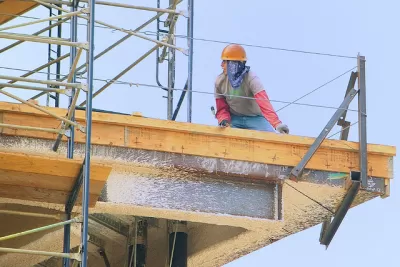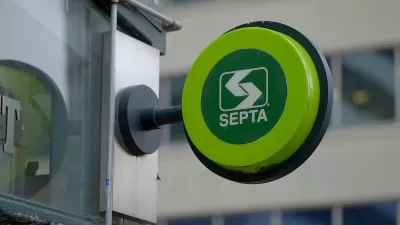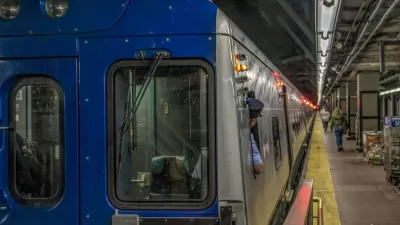With an aging workforce and few new workers entering the sector, cities could find themselves short of the workers needed to build and maintain projects funded by the Infrastructure Investment and Jobs Act.

According to a Brookings Institution report, the infrastructure sector is facing a ‘silver tsunami’ as a large portion of the workforce reaches retirement age, prompting concerns about who will build the many infrastructure projects being pushed through thanks to federal funding. As Kery Murakami writes in Route Fifty, “The Bureau of Labor Statistics projects that 1.7 million people employed in the infrastructure sector will leave their jobs each year between 2021 and 2031.”
This is due in large part to the demographics of the infrastructure workforce. According to Murakami, “nearly three-fourths of transit and intercity bus drivers are 45 years old or older, as are 55.7% of power distributors and dispatchers and 53.8% of rail yard engineers.” The situation is even more dire in the transit sector, where “Up to 50% of bus maintenance employees are eligible to retire in the next three to five years.” Meanwhile, “Only 11% of infrastructure workers are 24 years or younger.”
The difficulty of infrastructure jobs also means fewer young workers are entering the industry, and more workers are opting out. “The number of workers leaving jobs in construction, transportation, warehousing, and utilities for other jobs grew by almost 20% last year.”
FULL STORY: The ‘Silver Tsunami’ Expected to Hit the Infrastructure Sector

Manufactured Crisis: Losing the Nation’s Largest Source of Unsubsidized Affordable Housing
Manufactured housing communities have long been an affordable housing option for millions of people living in the U.S., but that affordability is disappearing rapidly. How did we get here?

Americans May Be Stuck — But Why?
Americans are moving a lot less than they once did, and that is a problem. While Yoni Applebaum, in his highly-publicized article Stuck, gets the reasons badly wrong, it's still important to ask: why are we moving so much less than before?

Research Shows More Roads = More Driving
A national study shows, once again, that increasing road supply induces additional vehicle travel, particularly over the long run.

Judge Halts Enforcement of Anti-Homeless Laws in Grants Pass
The Oregon city will be barred from enforcing two ordinances that prosecute unhoused residents until it increases capacity and accessibility at designated camping sites.

Advancing Sustainability in Los Angeles County Schools
The Los Angeles County Office of Education’s Green Schools Symposium brings together educators, students, and experts to advance sustainability in schools through innovative design, climate resilience strategies, and collaborative learning.

Using Old Oil and Gas Wells for Green Energy Storage
Penn State researchers have found that repurposing abandoned oil and gas wells for geothermal-assisted compressed-air energy storage can boost efficiency, reduce environmental risks, and support clean energy and job transitions.
Urban Design for Planners 1: Software Tools
This six-course series explores essential urban design concepts using open source software and equips planners with the tools they need to participate fully in the urban design process.
Planning for Universal Design
Learn the tools for implementing Universal Design in planning regulations.
City of Moreno Valley
Institute for Housing and Urban Development Studies (IHS)
City of Grandview
Harvard GSD Executive Education
NYU Wagner Graduate School of Public Service
City of Cambridge, Maryland
Newport County Development Council: Connect Greater Newport





























